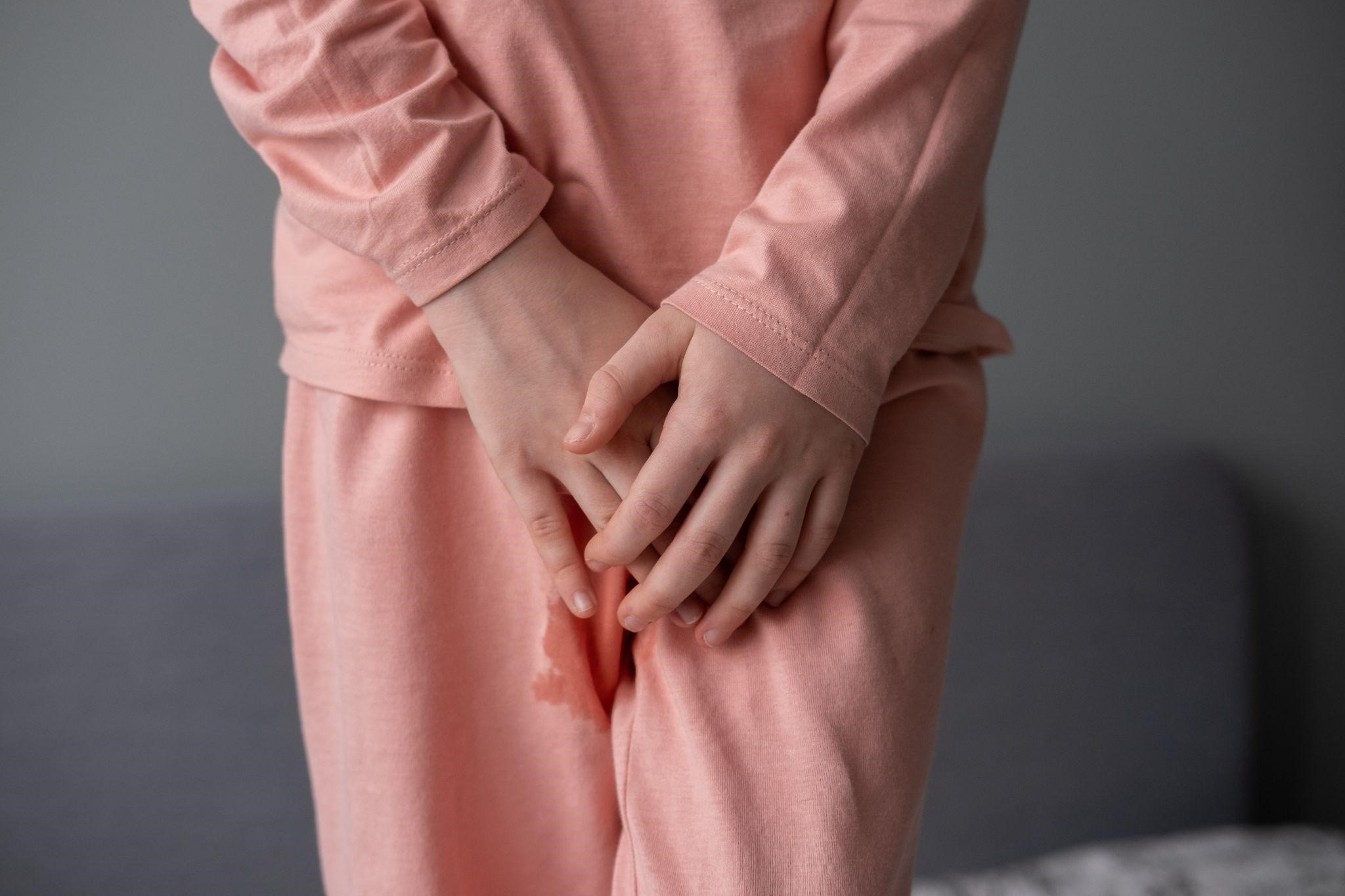Specialist Q&A , Medical Care
Urinary Incontinence: Dealing with the frequent urge to pee
Urinary incontinence is the involuntary leakage of urine from the bladder and is a common yet not frequently talked about condition. Incontinence can affect both sexes equally but is more prevalent among women and the elderly.

What is urinary incontinence?
In an ageing population like Singapore, urinary incontinence is an increasingly common problem. Understandably, it can cause distress and embarrassment and is often brushed off as a “normal part of ageing”. As a result, patients feel uncomfortable mentioning it to their doctor, often leaving the condition untreated — but it doesn’t have to be that way.
The prevalence of urinary incontinence in Singapore has been reported to range from 4.6%-14.5%, but this is likely under-reported. It is completely understandable as to why it is under-reported: there is a general lack of awareness about urinary incontinence, coupled with feelings of embarrassment or the fear of judgement.
You do not have to suffer in silence because this is a treatable condition. In this article, Consultant Urologist and Medical Director of Aare Urocare, Dr Fiona Wu, talks about when to see a doctor for our urinary issues and the wide variety of treatment options available to manage urinary incontinence effectively.
Causes and Symptoms
Urinary incontinence can be caused by anything from weak pelvic floor muscles, urinary tract infections, prostate enlargement, hormone deficiencies or problems with the nerves in the bladder. This is why a proper diagnosis is very important in getting to the root cause of your incontinence issues.
Common symptoms include:
- Leaking urine while doing daily activities like exercising, coughing or lifting objects
- Sudden urges to urinate and being unable to make it to the toilet in time
- Leaking urine into your underwear
- Bed-wetting overnight
Stress Urinary Incontinence
The most common type is stress urinary incontinence (SUI), which means that you may experience leakage of urine during certain activities that put increased pressure on your bladder, such as:
- Laughing, coughing, sneezing
- Running, jumping, and other forms of high impact exercise
- Lifting heavy objects
This is usually due to the inability of the urethra (the passage that urine is passed out of) or urinary sphincter to hold urine under pressure, resulting in unintentional urine leakage.
Urge Incontinence
Another type is urge incontinence, which happens when you get a sudden and strong urge to pass urine. You may find yourself wetting your underpants before making it to the toilet; this arises due to the bladder muscle contracting too early. This type of incontinence is also known as overactive bladder (OAB).
Mixed Incontinence
As the name suggests, if your symptoms sound like a mix of both stress urinary incontinence and urge incontinence, you may be diagnosed with mixed incontinence.
Overflow Incontinence
Last but not least, there is overflow incontinence, which means that despite having the urge to pass urine, one is unable to empty the bladder fully, leading to it ‘overflowing’ and leaking.
Why is it more common among women?
Unfortunately, urinary incontinence is more common in women, with events such as pregnancy and childbirth, or a higher number of pregnancies being risk factors for urinary incontinence. Menopausal women are also at risk due to a drop in oestrogen (hormone) levels.
Some women have temporary urinary incontinence when they are pregnant or shortly after childbirth due to weakened pelvic floor muscles. These women are at a higher risk of incontinence in their later years as well.
When to see a doctor
If incontinence is affecting your quality of life and relationships or occurs with increasing frequency, you should arrange for a consultation with your urologist and seek treatment.
During your first consultation, your doctor will ask for details of your symptoms, how the condition is affecting your life, and if you have any factors that increase your risk of incontinence. Ideally, if you have a bladder diary, do bring it along so that your doctor can have a look at how frequently your symptoms occur and what the triggers are.
A physical examination will be done to look for any underlying cause of this incontinence.
- In women, this involves a pelvic exam, where the doctor will ask you to cough to observe if any urine leaks. A vaginal exam may also be done to assess the strength of your pelvic floor muscles (as weak muscles lead to incontinence), or check if there is a cystocele (weak muscles leading to the bladder bulging into the vaginal wall).
- In men, a rectal examination will be done to check for any abnormalities in the prostate gland, as an enlarged prostate can cause an increased urge to pass urine, or be indicative of other diseases such as BPH (Benign Prostatic Hyperplasia) or cancer.
Sometimes, other simple tests like a urine dipstick may be done if your doctor suspects your incontinence is caused by a urinary tract infection, or an ultrasound scan of your bladder to determine the residual urine after passing urine, to check if there are any issues with bladder emptying.
Types of treatment
Urinary incontinence can generally be treated or even cured once the underlying cause has been identified. There are many types of treatment available, ranging from simple lifestyle changes to minimally invasive procedures and surgeries, which your doctor will discuss in detail with you after assessing your condition.
Treatment of urinary incontinence will be tailored to you based on the severity and type of incontinence, treatment preferences (with/without surgery), as well as your expectations after treatment.
Some non-surgical treatment options:
- Pelvic floor exercises — These exercises, known as Kegels, help strengthen the muscles that control urination.
- Bladder training — It involves training the bladder to hold urine more effectively by delaying urination.
- Double voiding — This refers to urinating twice over a short interval to ensure the bladder is completely emptied.
- Medications — Various medications can help decrease the urge to pass urine.
- Topical hormones — For women, topical vaginal oestrogens may be applied to maintain the strength of the vagina and related structures that maintain continence.
- Neuromodulation for OAB — This form of treatment alters or modulates nerve activity via Percutaneous Tibial Nerve Stimulation (PTNS). Electrical impulses are sent along the nerves which control the muscles in the bladder wall, relieving incontinence symptoms.
- FOTONA laser — This minimally invasive treatment uses thermal energy to remodel vaginal wall tissue. Tighter and thickened connective tissue around the pelvic organs helps provide support to the bladder and urethra, managing incontinence.
- HIFEM (HIgh-Intensity Focused Electromagnetic Technology) — This technology uses electromagnetic waves to stimulate the pelvic floor muscles.
- Neurotoxin injections — Injectable neurotoxins can be injected into the bladder muscles to prevent muscle spasms associated with urinary incontinence.
Surgery is generally offered to those with more severe incontinence or frequent symptoms, and the various surgical choices can be discussed with your surgeon.
- Urethral slings — there are various types of slings, and they are typically inserted through the vagina using a small incision (wound), under the urethra to keep it closed and maintain continence.
- Burch colposuspension — this operation involves tying stitches to supportive ligaments inside the pelvis to elevate both the vagina and bladder, improving continence.
- Injection of bulking material — intraoperative injections into the tissue surrounding the urethra helps support the urethra and prevent leakage.
Your urologist will be able to advise you on which treatment option is most suitable for your condition and will help you achieve the desired long-term outcomes.
Summary
Urinary incontinence is a very common yet not frequently talked-about condition. You do not have to suffer in silence because this condition is treatable and manageable.
If you recognise these symptoms in yourself or a loved one, be sure to arrange a consultation with your doctor so that you can obtain a diagnosis and have the cause(s) of your urinary incontinence treated accordingly. What’s important is to discuss your issues and concerns with your urologist so that they may work with you in developing a treatment plan that best suits your needs.
Aare Urocare is a one-stop incontinence centre, providing a wide range of in-clinic diagnostic tests and treatments for urinary incontinence, from minimally invasive procedures to surgical intervention. With the variety of treatment options available today, you don’t have to accept this condition and its inconveniences as a part of your life. It can be managed and treated, allowing you to age gracefully and live your life to the fullest.
Doctors

Related Articles
Specialist Q&A
A New Strategy in Surgical Management of Endometriosis: Fertility-Sparing & Nerve-Sparing Surgery
Endometriosis is a debilitating, chronic inflammatory disease affecting more than 190 million women worldwide and up to 10% - 15% of women in their prime age.
Read moreSpecialist Q&A
Tips to Increase Fertility in Men
Covid-19 is coming to a close and it’s time to start a new chapter in your life, hopefully with a child to complete the family. But if it’s not going as planned, the problem could be with us guys, as in male fertility being the issue. Here are some pointers that will hopefully make 2022 a much better year.
Read moreSpecialist Q&A
Egg Allergy
Dr Kent Woo says: Reactions to eggs can occur in many different forms. The most common reaction is a food allergy, in which eating eggs can lead to an allergic reaction such as hives (urticaria), swelling around lips and eyes, vomiting, and shortness of breath. Severe allergic reactions called anaphylaxis can be fatal when appropriate medical interventions such as using an Epipen (auto-injectable adrenaline) are not done.
Read moreLatest Articles
Medical Care
Clinical Exercise Physiologist (CEP): The Emerging of Exercise is Medicine
How Exercising can be a Medicine
Read moreMedical Care
Reversing type 2 Diabetes: Embracing Hope and Determination
Experience the remarkable journey of Ash and his grandfather Atok as they conquer type 2 diabetes through unconventional methods, showcasing the power of love and determination over adversity.
Read moreMedical Care
Bladder Cancer: What You Need to Know
Empower yourself with our comprehensive guide to bladder cancer. Explore symptoms, diagnosis, treatments, and supportive resources to safeguard your health.
Read more